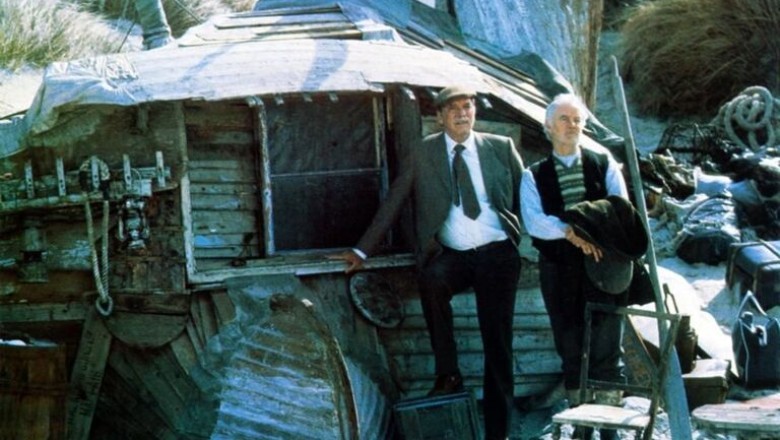
Unusual Beach Discovery by a Fisherman Could Solve Centuries-Old Mystery
Norfolk Coast
Our story begins in Norfolk, a county in the East Anglia region of England. Being situated on the coast, the environment led to unique rock formations among other possibilities. The locals were well aware of some interesting sights along the coast. The region, known for its picturesque landscapes and historical sites, had always held a special allure. Norfolk's coast was famed for its diverse flora and fauna as well as its geological peculiarities.
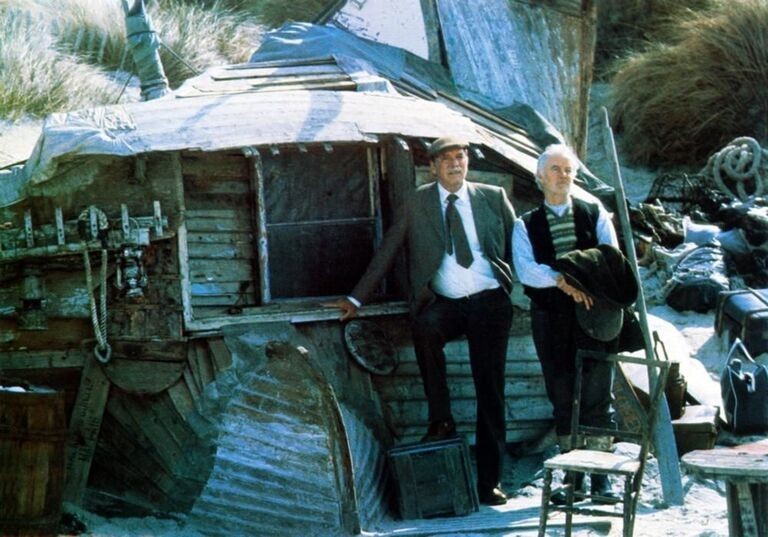
Many secrets lay hidden in the depths of the sand and rocks, and the locals knew of stories and legends surrounding these mysterious places. The coastline not only offered breathtaking views but also stood witness to history, from prehistoric times to the present.
Sleepy Town
However, outsiders barely paid attention to their fantastic tales. For most of its history, the rural area of Norfolk did not receive nearly as much attention as London or even comparable small towns elsewhere in Britain. But all that changed on a fateful afternoon in 1998.

Norfolk, often overlooked as a quiet, unassuming part of England, was suddenly in the spotlight. The locals, who had known their small secrets and discoveries for years, were now at the heart of an exciting mystery. This particular afternoon was set to change Norfolk's history and its standing in the archaeological community forever. It marked the beginning of a discovery that would unveil Norfolk's historical significance.
Meeting John Lorimer
One day, a man named John Lorimer was out catching wild shrimp on the beach near his home in Holme, Norfolk. Along with his brother-in-law, the local noticed that the North Sea was unusually low that day. He had never seen it like that in his whole life. John, an experienced fisherman and knowledgeable about the coastal landscape, immediately sensed that something was different.

The beach he knew so well revealed a new face to him, and he felt that this could be an extraordinary day. Together with his brother-in-law, John hoped that the low tide would allow them to explore places usually hidden underwater. However, this day was destined to bring more than just an unusual tide occurrence.
Another Catch
Hours passed, and the men had some trouble netting a worthwhile catch. Perhaps it was due to the low tide, or some other creature had claimed the day's catch for itself. But soon, something other than seafood was on their minds. It was something they did not want to sink their teeth into.

The men, well-versed in the whims of the sea and its secrets, felt that this day held something special. Their curiosity grew with each passing hour, and they were ready to delve into the mystery that lay before them. What they would soon discover would forever change their view of the beach where they had spent so many days.
Mysterious Weapon
As they approached a lump near the waterline, the men saw what appeared to be a piece of metal in the sand. Upon closer inspection, it was clear that someone had sharpened it into an axe head! In fact, this was not the first time John had found such an object. The men were fascinated by the discovery and knew that this was no ordinary beach find. They wondered how old this object could be and who might have left it behind long ago.
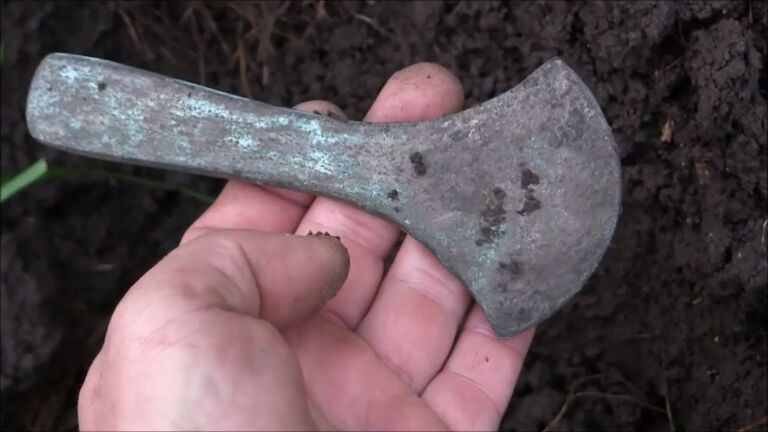
The discovery of such an axe in this area raised many questions – about the region's history and the people who once lived there. John and his brother-in-law, now less focused on their catch and more on the historical puzzle, decided that they needed to learn more about this mysterious object.
Not the First Time
Just a few months earlier, he had come across a similar one, suggesting that the two artifacts could be connected. After all, ancient axe heads were not scattered like shells on every English beach. Here was a puzzle, and John was determined to solve it. The discovery of the second axe head confirmed John's suspicion that this area was more than just a random find spot.

He began to consider the possibility that Holme beach had once been the site of significant historical events. Questions multiplied in his mind Were these axes witnesses of a past civilization? Were they part of a larger archaeological treasure yet to be discovered? John was determined to find answers and perhaps reveal a long-lost chapter of history.
Metal Detector
John sought additional help from one of his friends with a metal detector, who, upon realizing the significance of the find spot, contacted the Castle Museum in Norwich. From there, their excavation was officially funded as John pointed out an unusual structure on the beach. The museum quickly recognized the potential of the discovery and provided resources for a proper investigation. The team of archaeologists and historians was excited about the opportunity to learn more about Norfolk's hidden past.
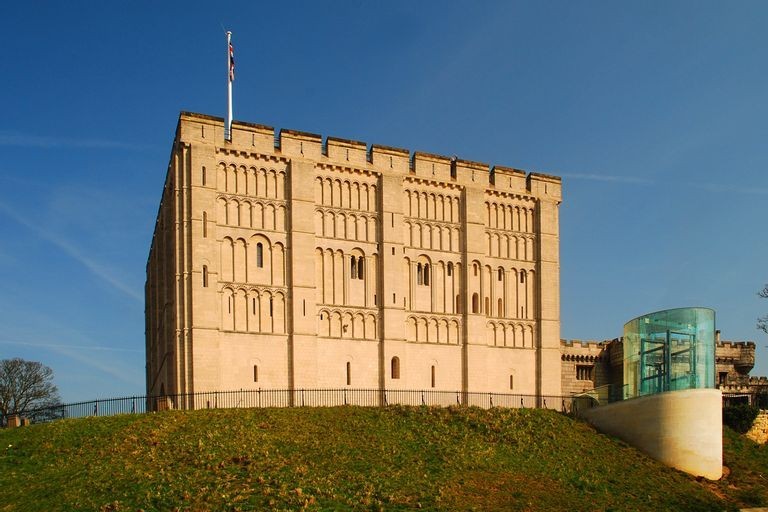
The structure John had pointed out was not just a random appearance in the sand; it could be the key to a historical puzzle that had remained unsolved for centuries. With growing excitement, John and the museum team prepared for an excavation that could potentially rewrite Norfolk's and England's history.
Puzzlement
It was a tree stump jutting out of the sand, and John might have ignored it if it didn't look so gnarled and ancient. There were signs of hacking and human craftsmanship around the wood, leading the adventurers to believe it was a fish trap. Then they noticed more peculiarities nearby. The discovery of the tree stump raised new questions Was it part of an ancient structure or simply a remnant of nature?

John's curiosity was piqued as he noticed the traces of human manipulation on the wood. He began to speculate whether this stump could be part of a larger, possibly prehistoric structure. The idea that they might have stumbled upon the remains of a long-forgotten civilization made John's heart race. He and his team began to examine the surroundings more closely, hoping to find more clues.
A Perfect Circle
A circle of small wooden posts surrounded the stump – John suspected most of their shafts were buried deep in the sand. His heart raced. Was this just an unusual natural formation, or had they stumbled upon a remnant of a lost civilization? The discovery of the wooden post circle was an exciting moment for John and his team.
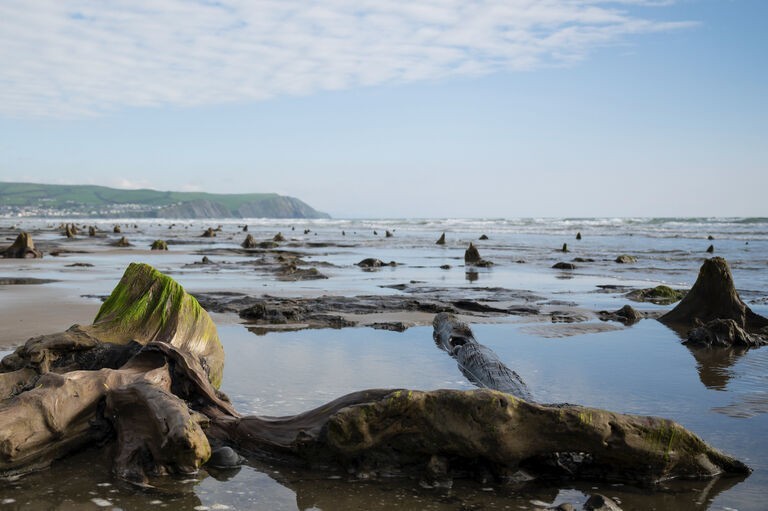
They could only imagine what this structure meant and what secrets it might hold. As they continued to dig and uncover the hidden parts of the structure, excitement grew. They began to consider the possibility that they had come across something significant and perhaps revolutionary in the history of human settlement in Norfolk.
A Singular Event
Tests and analyses strongly suggested that it was a human-made site. Writer and historian Charlie Watson confirmed

"The fact that all trees were felled simultaneously strongly indicates that the circle's construction was a singular event." But why is this important?
Tree Rings
Well, Charlie's theory contradicts those who believe the structure was built over a long period. The jury is still out as dating suggests some woods were present at least three months before construction began.

Interestingly, scientists confirmed that some of the massive trees were not cut down but fell and were then moved. The news spread quickly.
Seahenge
It didn't take long for the media to catch wind of what was being unearthed in Norfolk, and they dubbed it the "Stonehenge of the sea" or "Holme I".
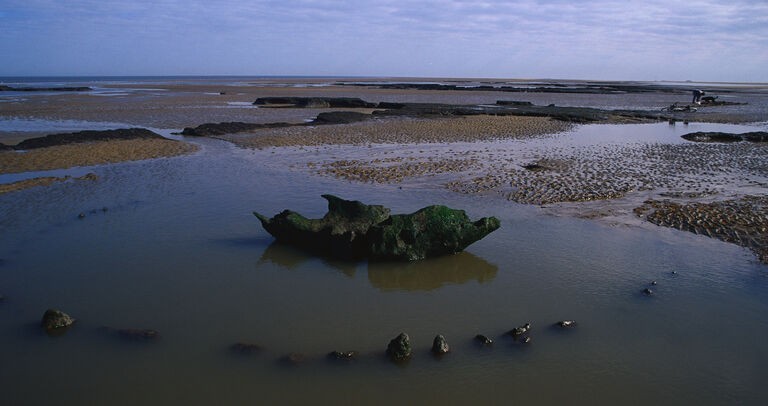
The news spread among the locals, some of whom could hardly believe it. Allegedly, this Seahenge dates back to 2049 BC, to the Bronze Age!
Back in Time
So how did a monument from thousands of years past end up on the shores of Norfolk? To uncover the truth about the events at Seahenge, back in the early Bronze Age, we would need to travel through time. This era was marked by an upsurge in agriculture and technology, a time of change and progress.
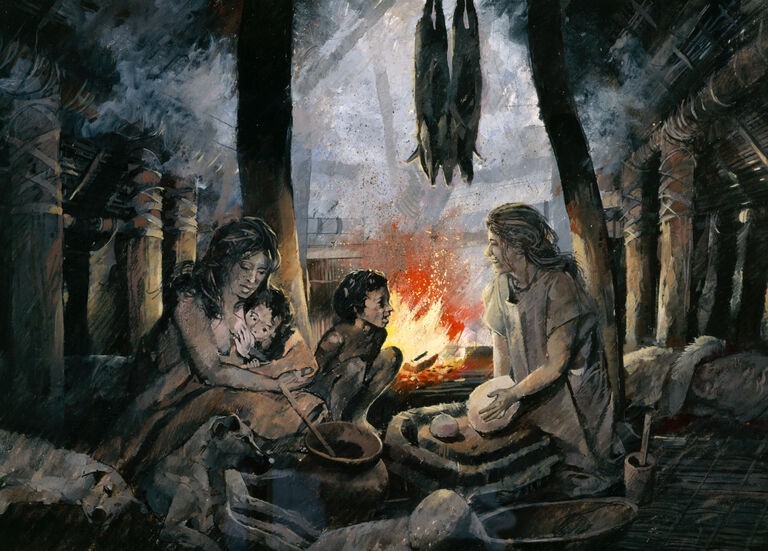
Seahenge, a mysterious structure, emerged in the midst of this historical upheaval, connecting us with a long-forgotten culture. The question of how this impressive monument found its way to the beach remains a mystery deeply rooted in the past.
Time for a Monument
Here is the timeline historians have pieced together: Once the local civilization had established itself, they decided to erect a monument. The project required at least 50 different axes, as they made a crucial point of cutting the wood into specific shapes.
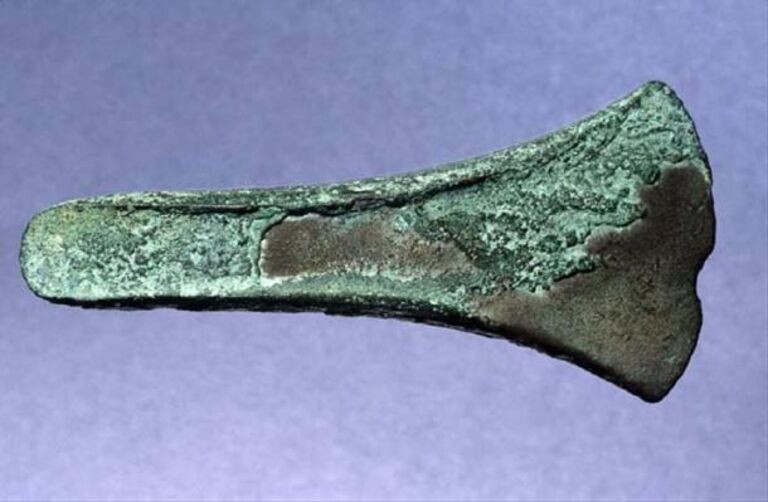
John Lorimer was fortunate enough to find two of them himself. This monumental endeavor reflects the community spirit and craftsmanship of the time. It speaks to a deep connection between people and their environment and their desire to create something enduring.
Community Effort
"Furthermore," explained Charlie Watson, "a great deal of work was involved in felling, transporting, preparing, and erecting the timbers, so a large number of individuals – possibly an entire community or extended family – likely worked together."

This collective effort demonstrates how the people of the Bronze Age pursued common goals and accomplished incredible feats. Their ability to realize complex projects transformed the landscape and left a lasting legacy that we still marvel at today.
But where did the trees come from?
And this group had never intended for the tides to take over their hard work. When it was built in 2049 BC, Seahenge existed on a salt marsh. Centuries later, an offshore barrier grew, blocking the sea's access to the area.

After that, more trees started growing in freshwater. While this marked an exciting find, not everyone in Norfolk was happy about the museum's involvement.
More Than Meets the Eye
It's not that the locals didn't believe in Seahenge – they just didn't want the institution to lay hands on it! Plans were afoot to dismantle the monument and remove it from Norfolk. "Seahenge has more significance and power here on Holme beach than it could anywhere else," said a local.
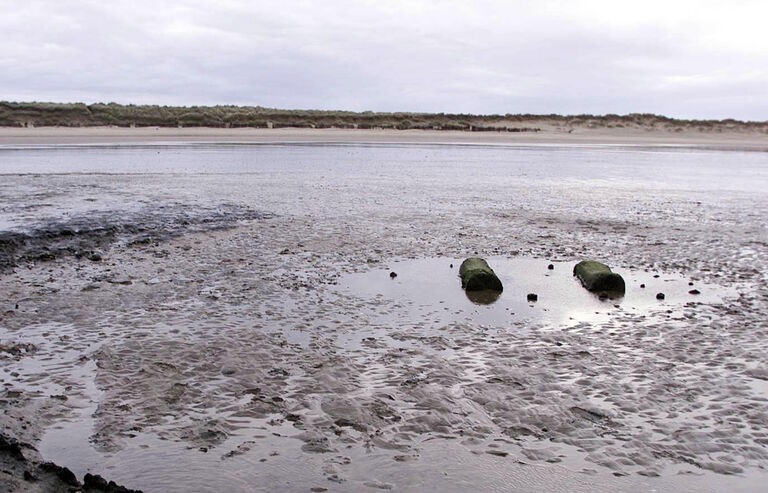
This statement reflects the deep connection of the local population to their cultural heritage and their concern that this heritage could be lost through external intervention.
Ongoing Resentment
Research continued, and the locals grew louder. Another disgruntled townsperson stated, "That's £60,000 being spent by archaeologists patting each other on the back and saying they're doing the right thing.
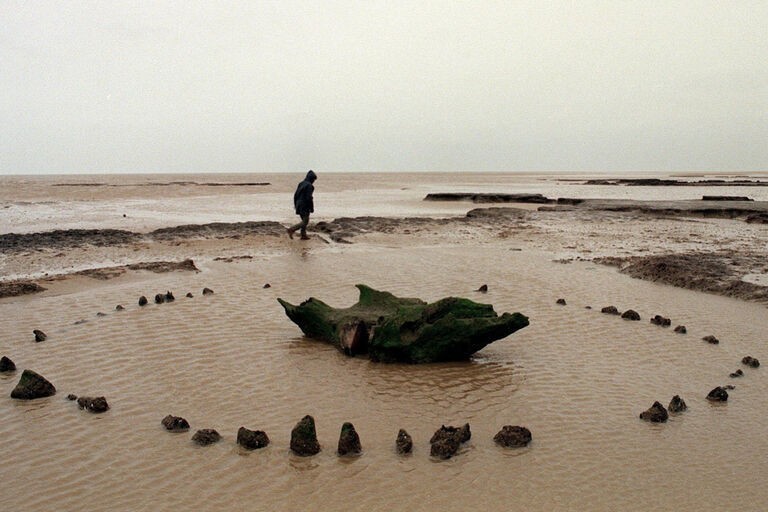
It's a farce." These critical voices underscore the tensions between the desire to preserve and explore the historical heritage on one hand and respect for the significance and wishes of the local community on the other.
Finally on Display
Ultimately, local protests against an exhibition were ignored, and today most of the remnants of Seahenge are housed in the Lynn Museum, close to its original site.

Fortunately, the enthusiasm for this monument helped experts unlock the mysterious significance behind its more famous cousin.
Stonehenge
That would, of course, be Stonehenge. And beneath the famed site, a team of archaeologists stumbled upon a collection of human skeletons, fascinating relics from the region's mysterious past.
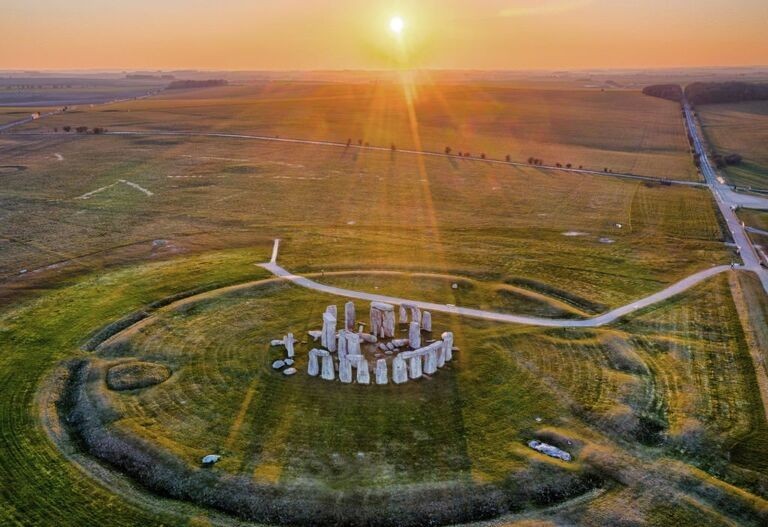
But upon closer inspection, they realized that one of them conceals an incredible secret. Hidden in the mouth of a person deceased for thousands of years, they found an artifact that could change everything we believe to know about this historic site.
A Passion for History
As a student at the University of Bradford in northern England, Jackie McKinley developed a passion for studying human remains. And after her graduation, she continued her interest in the long-gone inhabitants of this world.
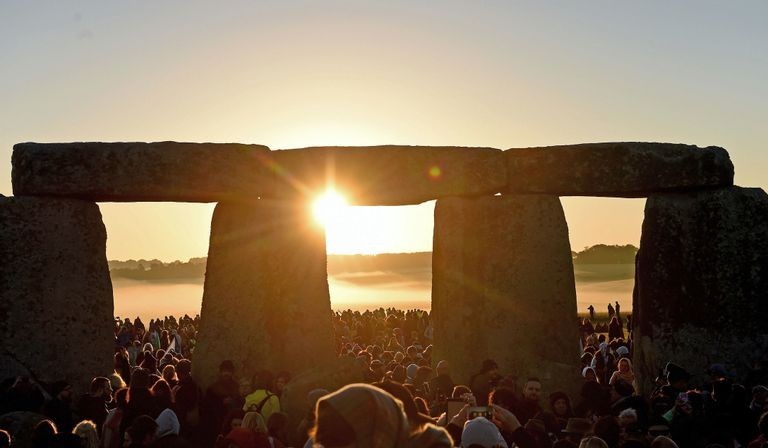
For decades, she has spent her time analyzing some of Britain's oldest archaeological sites – including the iconic monoliths of Stonehenge.
Bone Specialist
As a bone specialist at Wessex Archaeology, McKinley worked in the shadow of the famous stones, piecing together the stories of the people buried at this peculiar site.

In February 2018, she appeared in a documentary by Discovery UK. There, she recounted an incredible discovery that could entirely alter the narrative of Stonehenge.
Mysterious Monument
Located about eight miles north of the English city of Salisbury, the ancient stone circle of Stonehenge is world-renowned.

Although its distinctive shape is instantly recognizable, the origins of this monument remain a puzzle. To this day, we are not exactly sure who built it or why.
Druid Theory
Originally, experts believed Stonehenge was built by the Druids, an ancient people first recorded in Britain in the 3rd century BC.

However, later scholars have determined that construction began around 3000 BC. It wasn't until around 1520 BC, almost 1500 years later, that the project was finally completed.
Peculiar Formation
Stonehenge is said to have been built in six phases and consists of a series of sandstone slabs, known as sarsens. Between these are smaller stones, called bluestones because of their distinctive hue.
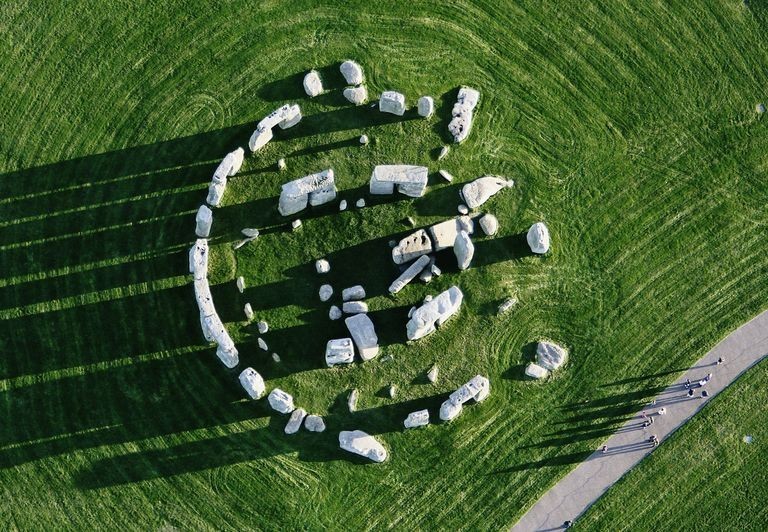
Some are set upright, others placed horizontally, forming a kind of post-and-lintel formation.
Origin of the Stones
Experts believe that the sarsens come from the surrounding landscape, likely from the Marlborough Downs about 20 miles away.

However, the heaviest of these stones, the Heel Stone, weighs over 30 tons. How did these ancient people, without modern machinery, lift these rocks into place?
Man-made or Natural?
The mystery deepens when considering that the bluestones come from South Wales – a distance of up to 150 miles. Some believe these stones could have reached Stonehenge only through melting glaciers transporting them across the land.
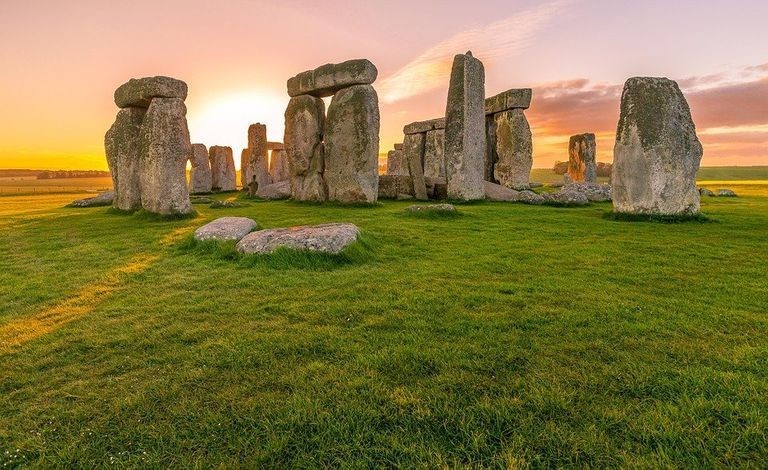
However, most experts accept that human innovation, not a natural event, was behind this impressive feat.
Just Theories
One of the most widely accepted theories today is that the stones were placed on sledges and rolled on waiting rafts along felled trees.

From there, they were transported up the river to their new home in Salisbury. Yet, no evidence has ever been found to support these claims, and the truth behind the construction of this great monument remains a mystery.
Astrological Purpose
Just as they don't know exactly how Stonehenge was built, historians are also unclear about its purpose. Some speculate the monument had astronomical purposes, perhaps to predict events like solar eclipses.

Indeed, it has been observed that the stones align with sunrise and sunset during solstices. However, many experts have dismissed these theories as nothing more than New Age fantasy.
Much Speculation
In recent times, some archaeologists have suggested that Stonehenge once marked the point where two different territories intersected and served as a meeting place.
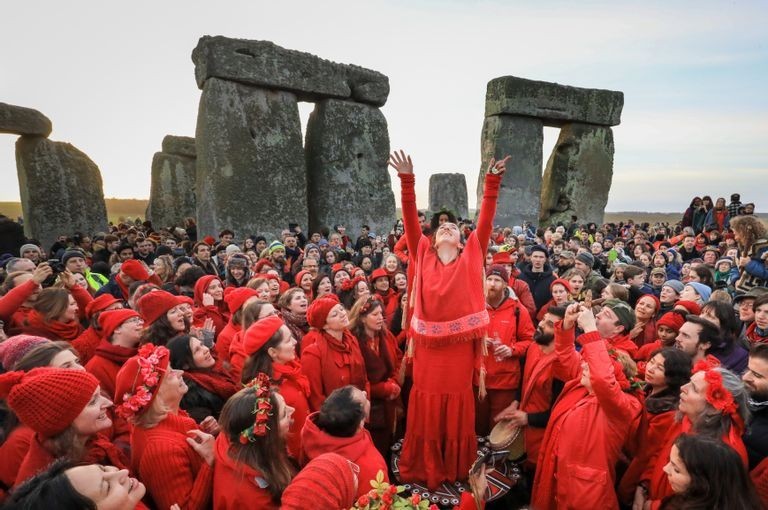
Others suspect the monument was a place where sick people came for healing. While this theory remains unproven, there is ample evidence linking the circle to the cycle of life and death.
An Old Man
Over the years, experts have discovered numerous human remains in and around Stonehenge. For instance, in 2002, a team from Wessex Archaeology unearthed the grave of a man known as the Amesbury Archer.
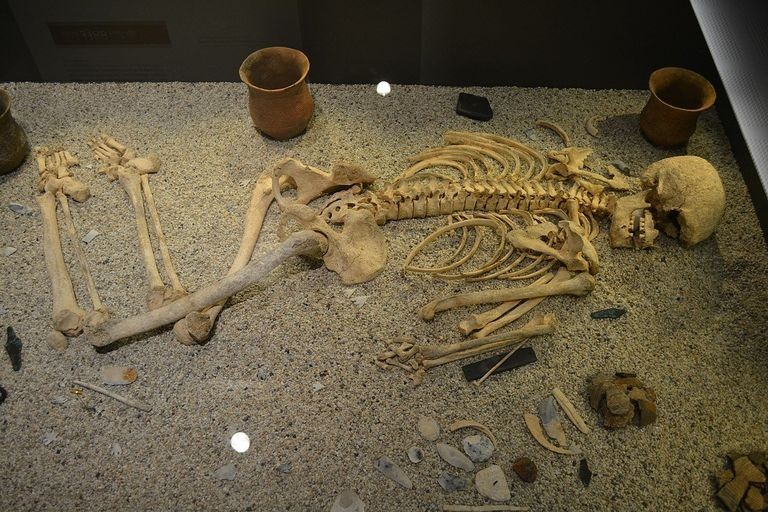
The burial dates back to around 2300 BC and was a relic like no other seen before.
Wrapped in Gold
Located just a few miles from Stonehenge, the burial site was the richest Bronze Age burial ground ever discovered in Britain.
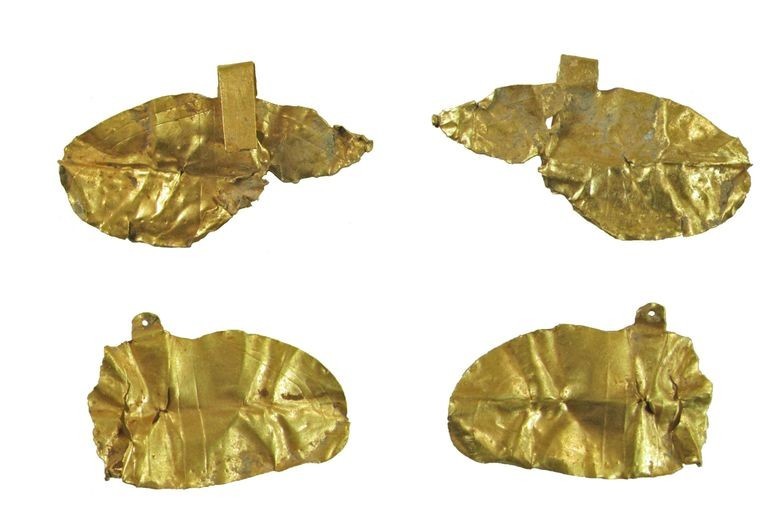
During the excavation, archaeologists unearthed around 100 artifacts from the site, including golden hair ornaments dating back to around 2470 BC.
Burial of an Archer
Furthermore, the gold found at this burial site was the earliest example of this precious metal ever discovered on British soil. And that was not all.

Along with the male skeleton, archaeologists discovered a range of copper tools and a collection of ancient ceramic pots. Additionally, there were arrowheads and arm guards, indicating that the man might have been an archer during his lifetime.
Not a Local Resident
Upon closer examination, researchers were able to learn more about the life of the Amesbury Archer. Perhaps most intriguing was that he did not originate from the Stonehenge area.

Studies of his tooth enamel revealed that he spent his childhood in the Alps in Europe before coming to Britain.
Metalworking
For some reason, the Amesbury Archer had traveled hundreds of miles to arrive during the construction of the great monument of Stonehenge. But why?

Based on the artifacts found in his grave, experts believe he was a metalworker, possibly one of the first in Britain to work with gold. Could he have had a role in the construction of Stonehenge itself?
He Was Not Alone
Whether the Amesbury Archer was involved in the construction of Stonehenge or simply drawn by the attraction of the new circle, we may never know. However, the discovery of his lavish grave shed new light on one of Britain's least understood monuments.
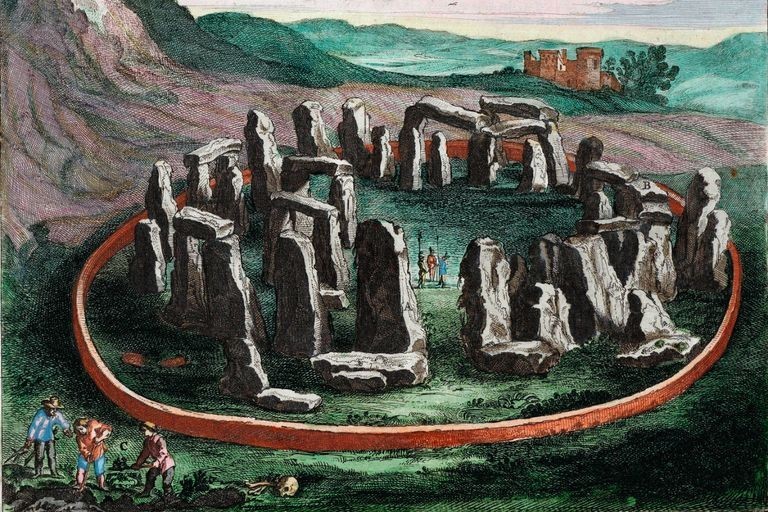
And this Bronze Age metalworker was by no means the only person laid to rest in and around these peculiar megaliths.
Mass Burial
In fact, since the 1920s, archaeologists have unearthed cremated human remains from Stonehenge and its surroundings. For example, the remains of 56 individuals were found in pits along the inner perimeter of Stonehenge itself.
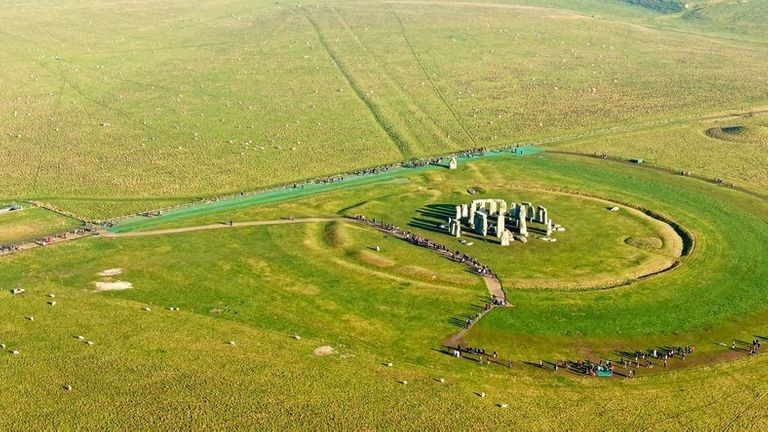
Although initially dismissed as insignificant relics, modern researchers have reexamined them.
Long Journey to Stonehenge
In 2018, archaeologists published a study on the remains of 25 men, women, and children originally buried at Stonehenge.
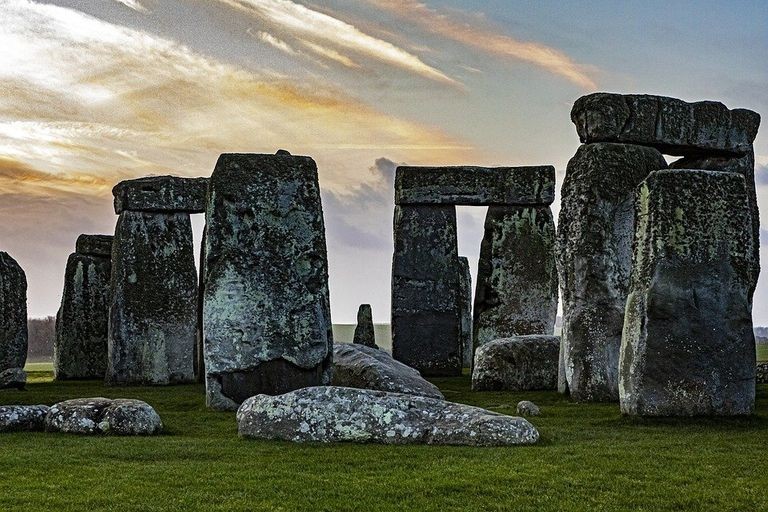
They date back to around 3000 BC and would have been buried around the time of its construction at the monument. Like the Amesbury Archer, some of them had traveled far to reach there.
They Came with the Stones
Using a technique called strontium isotope analysis, researchers found that 15 remains came from local people, but ten did not.
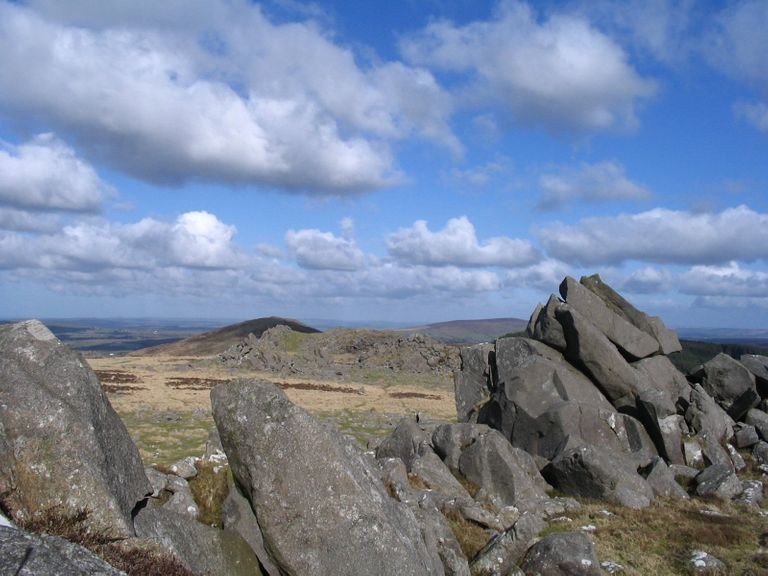
In fact, it is believed they came from West Britain – possibly from the same area as the origin of the bluestones in Wales.
The Final Resting Place
Additionally, archaeologists discovered that some of the remains were kept in special pouches, indicating they had died elsewhere before being brought to Stonehenge.
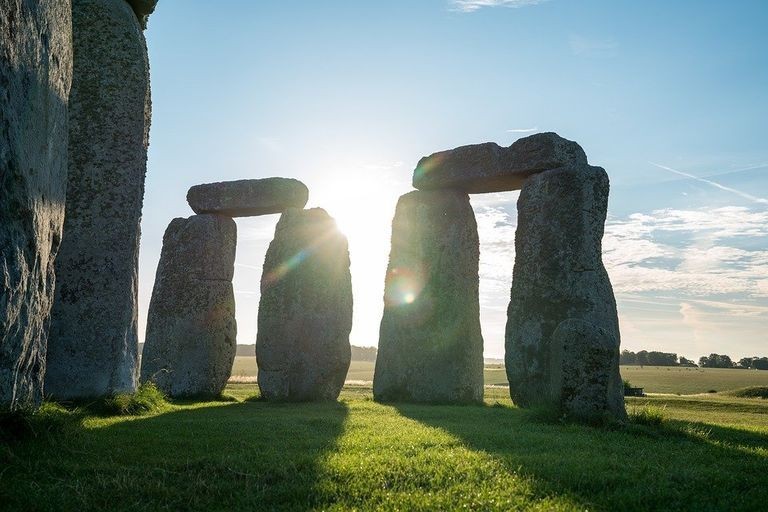
But who would carry them over a hundred miles through the British landscape? And why? At present, this mystery remains unsolved.
Recovered in London
Along with cremated remains, a number of more complete skeletons were also unearthed in and around Stonehenge. In fact, one was discovered as early as 1923, though it was long believed to have been lost during the Blitz in World War II.

However, in 1999, the historic remains were rediscovered at the Natural History Museum in London.
Headless
The man was approximately 35 years old when he died between 100 BC and 1000 AD, and his story was fascinating. The woman who discovered him was McKinley, an osteoarchaeologist working on a dig by Wessex Archaeology.
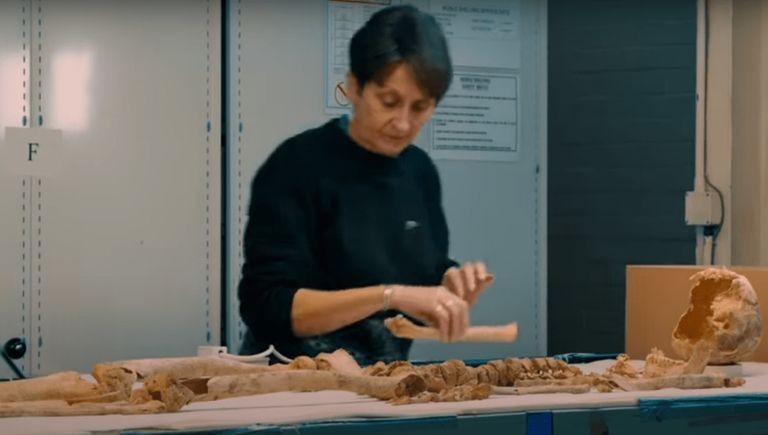
For she found markings on the vertebrae and jaw of the skeleton indicating the individual had been beheaded with a sword.
A New Twist
This tale of a violent execution introduced a new twist in the Stonehenge narrative. But it wouldn't be the last reveal McKinley would uncover.
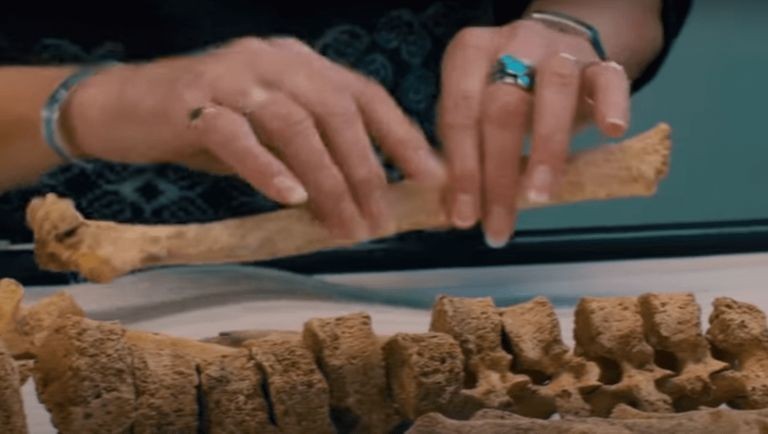
Nearly two decades later, in 2018, the expert featured in a documentary produced by Discovery UK, the British arm of the Discovery Channel. There, she discussed a skeleton found near the Amesbury Archer.
Much to Unravel
According to McKinley, experts know there are up to 400 graves in the immediate vicinity of Stonehenge. By studying the human remains, she believes she can learn more about them and the reason for their presence here.
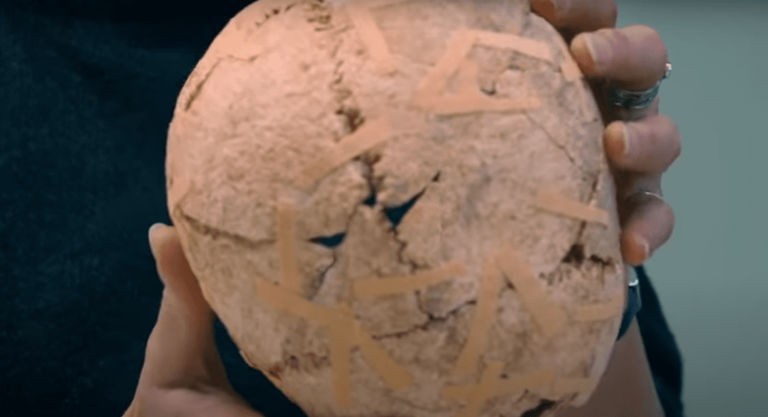
In the documentary "The Secret Skeletons Beneath Stonehenge," she explains, "The dead are often buried in specific positions, postures, or with certain materials."
Monument for Occasions
"So there is a range of things that I'm looking for," McKinley continues, "because that can tell me something about their lives but also about Stonehenge."
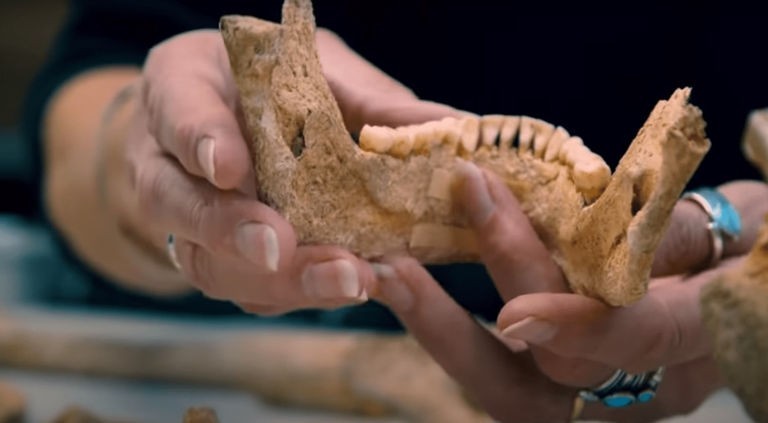
In fact, the osteoarchaeologist has long been skeptical of the theory that the site was only used a few days a year. And now she believes she has evidence to support that claim.
Grave Relics
In the documentary, McKinley focuses on her findings from a skeleton buried beneath Stonehenge.
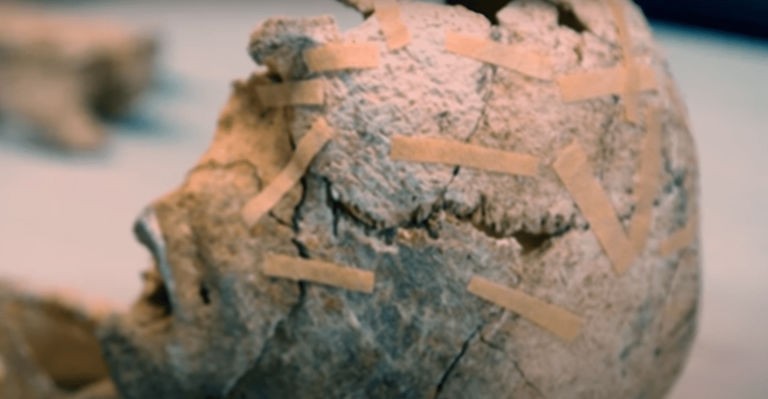
"From the skeleton, I can tell it was likely a young adult male – probably in his early twenties," she explains. However, the most intriguing aspect of this individual was a peculiar artifact found in his grave.
Golden Mouth
"These are a pair of golden ornaments that were found rolled up in the mouth," McKinley explains. "They are wedged on the right inside of the jaw.

This means they were either placed in the mouth at the time of death or certainly before burial." It's not uncommon to find valuable items alongside human remains – but this was something different.
Buried in Craft
"These are really rare," McKinley continues. "There are only about eight pairs in the entire country." But what could such an unusual artifact signify?
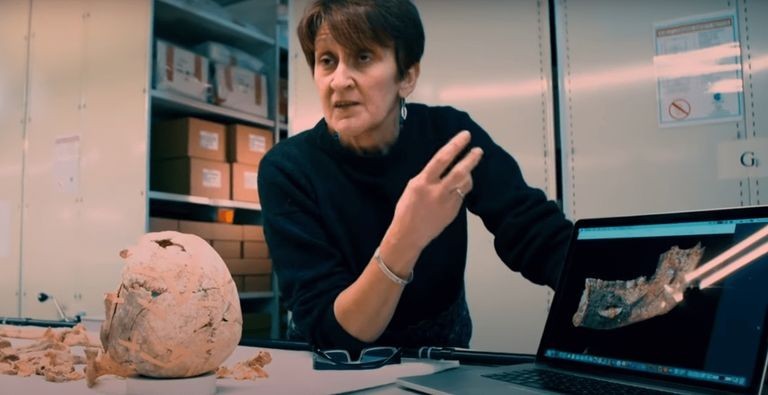
According to experts, prehistoric people were often buried with items reflecting their occupation or status in life. So was there a connection between the man and the finely crafted gold?
A Celebrated Craftsman
At the time of burial, metalworking in Britain was still in its infancy. However, the objects recovered from the skeleton at Stonehenge were of remarkable quality.
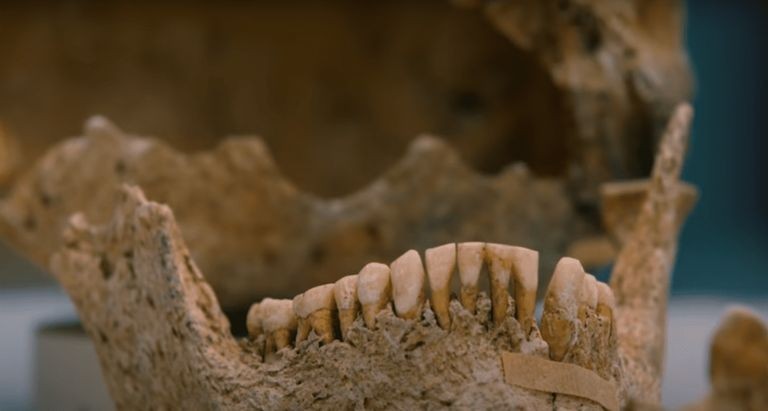
According to McKinley, it would have taken a high level of skill to craft them – perhaps marking the individual as a worker of exceptional talents.
Magical Transformation
"These items were crafted with extraordinary finesse and precision, requiring an impressive combination of advanced technology and craftsmanship," explains McKinley. "It is remarkable how the craftsmen of that time were able to transform something as basic and raw as a simple rock into a work of such delicacy and beauty.
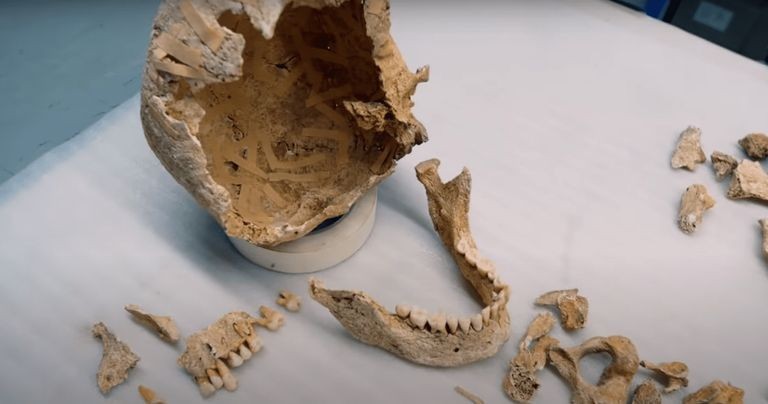
This process, which demanded deep knowledge and advanced skills, would have likely been perceived as almost magical ability in the society of that era. Indeed, the seemingly effortless transformation of something ordinary into something extraordinary gives these artifacts an aura of wonder and mystery."
Gift from a Colleague
While McKinley believes the mysterious man himself was a metalworker, she does not think he was responsible for the ornaments in his own grave. Instead, she suspects the golden adornments were crafted by another individual buried just ten feet away.

"I think he was the one working the magic," she explains. "I think he was the one capable of performing these transformations from pieces of rock into objects of beauty."
Traveling Merchants
Interestingly, this second man was the Amesbury Archer – the skeleton initially discovered in 2002 by Wessex Archaeology. As mentioned, he too was buried alongside golden ornaments as well as metal tools.
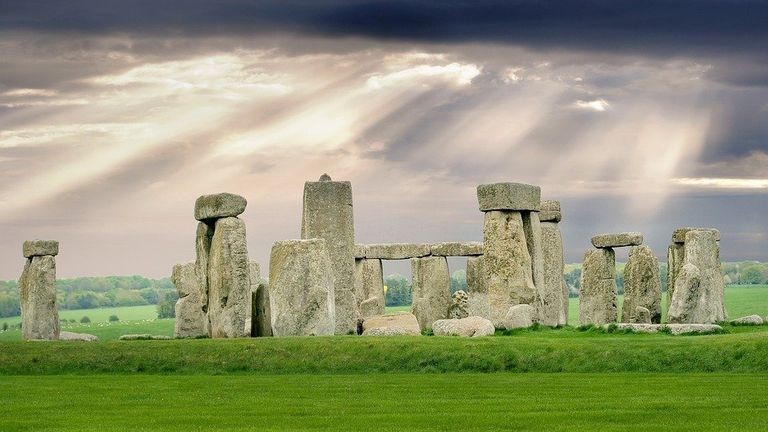
But what were these two talented individuals doing at Stonehenge? According to McKinley, they were likely traveling to the monument to sell their wares.
Meeting Place
For McKinley, the presence of these craftsmen at Stonehenge is a clear indicator that her theory is correct. Stonehenge was not merely an occasional place of worship, but indeed a bustling hub of trade and exchange.
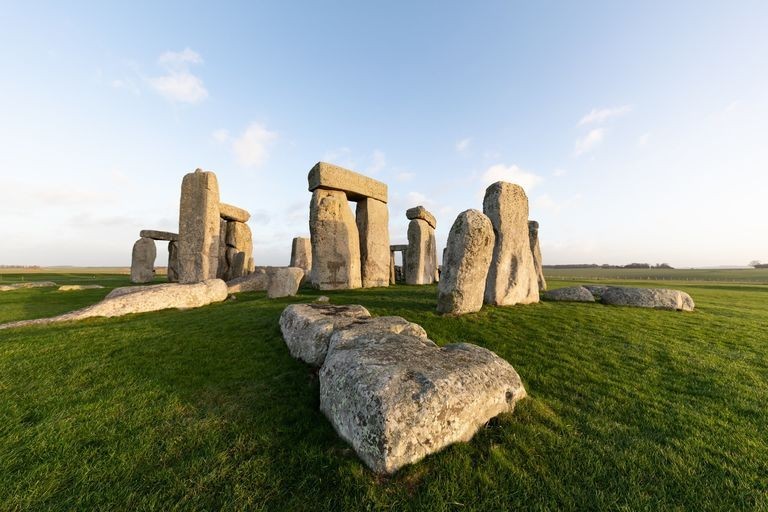
Surprisingly, this was not the only revelation gleaned from the skeletons buried beneath the stone circle.
Modern Germany
No, in the documentary, McKinley further delves into the analysis that originally traced the Amesbury Archer back to the European Alps.

Now they have apparently narrowed it down to a region in present-day Germany – a distance of about 700 miles. When she applied the same tests to the younger man, she found equally surprising results.
Well-Traveled
The analysis revealed that the man was born in the area around Stonehenge. However, it also disclosed that he spent his teenage years in central Europe – indicating multiple long-distance journeys.

According to McKinley, it's an astounding revelation that sheds new light on life in prehistoric Britain.
More Advanced than We Thought
"The fact that we could prove that people possibly moved over quite long distances several times in their lives is fascinating," explains McKinley. "What you have is a connection between people over a large geographical area... and whether they maintained this connection due to trade, family, or likely a combination of both is in many ways so modern.

It shows us that even in prehistoric times, people were able to build and maintain extensive relationships, highlighting the complexity and connectivity of their societies."
Marketplace Hub
In the documentary, the narrator emphasizes the significance of McKinley's discoveries. "This finding changes our understanding of the natural world," he says. "Four thousand years ago, these two men traveled great distances over land and sea. They were part of a complex network of connections, with the marketplace of Stonehenge perhaps at its core.
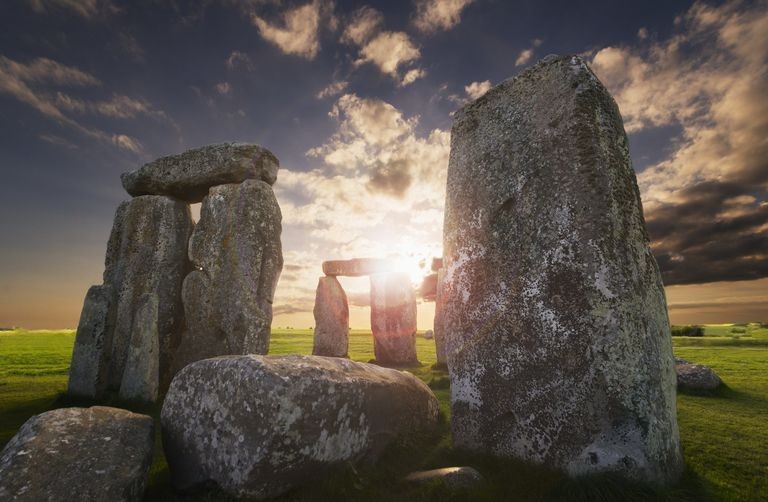
Their travels and interactions illuminate the advanced cultural and economic connections of this era, demonstrating that Stonehenge was more than just a religious or ritual site."
Treasures from Around the World
Remarkably, this is not the only evidence that Stonehenge was frequented by an astonishingly well-traveled population. In fact, the documentary reveals a range of fascinating artifacts recovered from graves in the area. In one grave, archaeologists found a necklace made of Danish amber, in another an axe head made of Italian jade.
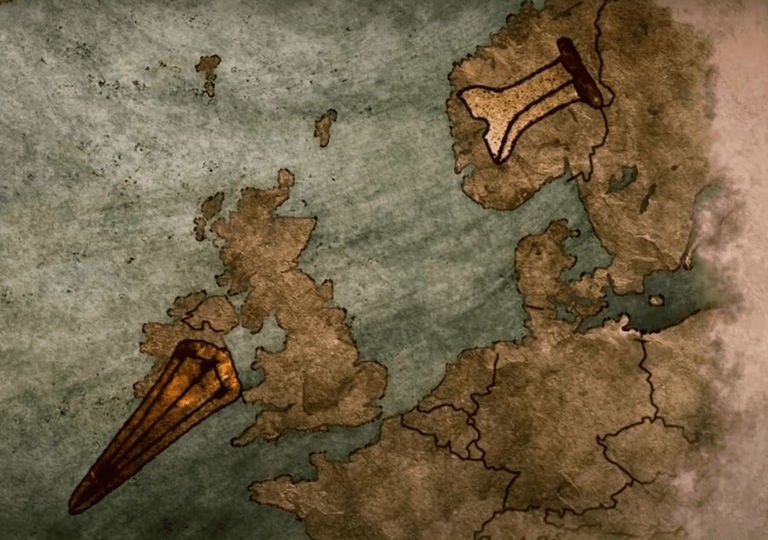
Elsewhere, the team discovered a dagger crafted from a blend of Welsh copper, Cornish tin, and Scandinavian whale bone. These finds underscore the extensive trade and cultural relationships that existed as early as this time between various regions of Europe.
The Mystery Continues
Today, researchers continue to strive to understand the many secrets of Stonehenge and learn more about who built it and why. While the work of individuals like McKinley helps unravel the monument's past, many questions remain unanswered.
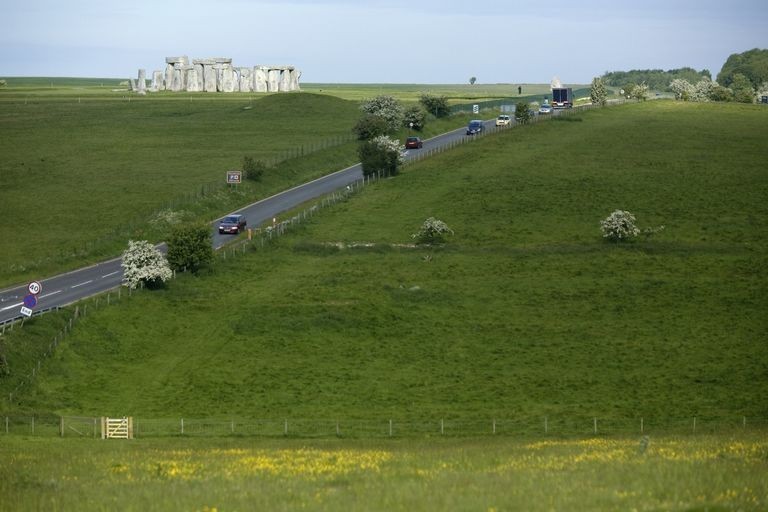
In fact, we may never fully uncover the entire story of how these peculiar monoliths came to be. However, ongoing research and the discovery of new artifacts and connections lead to a deeper understanding of the complex cultural and social structures that surrounded Stonehenge, revealing that the history of this site has many more facets than previously assumed.











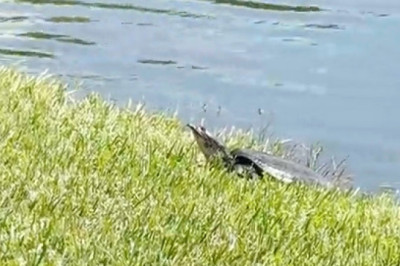








Comments
0 comment